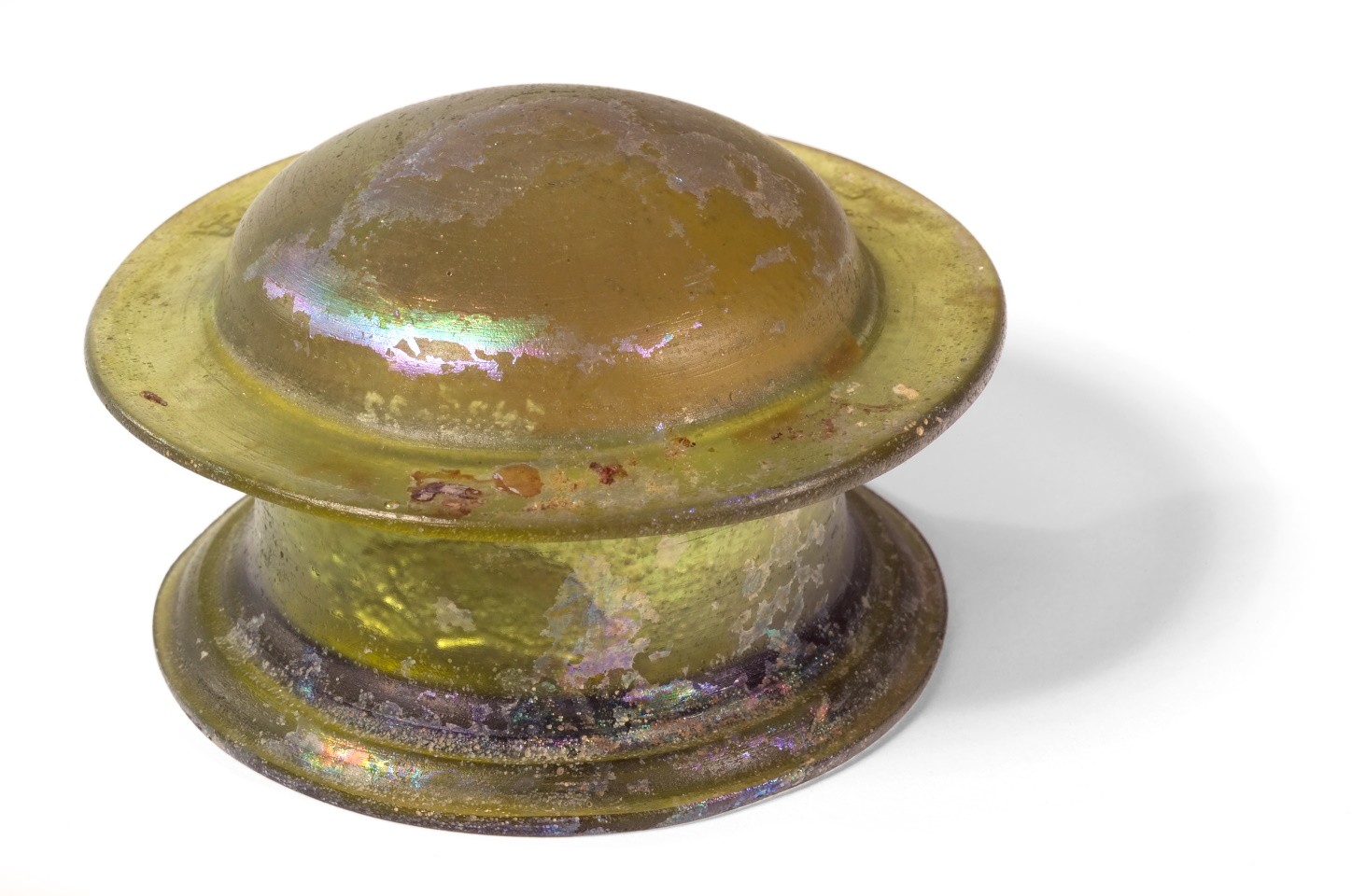Bisher nahm man an, dass diese Gefäße im Wachsausschmelzverfahren in Formen geschmolzen wurden. Die unregelmäßige Wandstärke und die krumme Wandung könnten jedoch ein Hinweis darauf sein, dass diese Pyxiden auf der Töpferscheibe entstanden sind.
Werkstätten im antiken Elyros im westlichen Kreta waren bekannt für diese Dosen aus Glas, die in ihrer Form an unteritalische Pyxiden aus Ton erinnern. (AVS)
en

